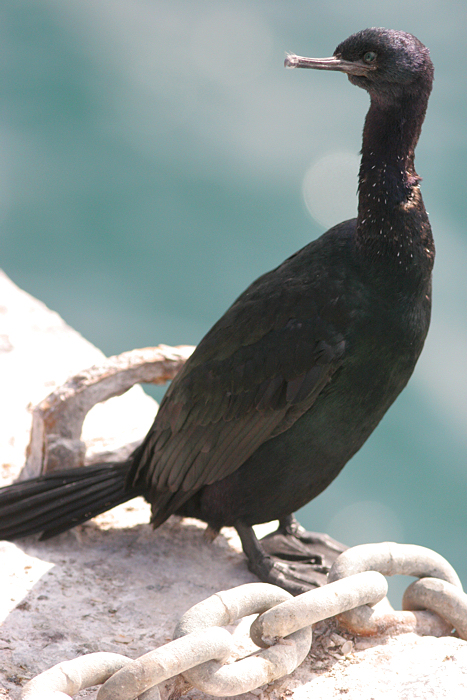
Date: 2006-01-27
Lens: Canon 300mm IS F4 + 1.4x II Converter

 Pelagic Cormorant
Phalacrocorax pelagicus
Pelagic Cormorant
Phalacrocorax pelagicus
 Description
DescriptionThe Pelagic Cormorant is one of the least social of all cormorants, nesting in loose colonies or far from its nearest neighbors. The Pelagic Cormorant forages by diving, which it does from the surface of the water, under water and chasing fish. It grabs fish with its bill, rather than spearing it.
General: Sexes similar. 20 to 30 inches in length.
Adult Alternate: Entirely black plumage with a greenish gloss. White flank patch. Long, dark, hooked bill. Red facial skin patch (gular region). Two head crests. Long, thin neck with thin white plumes. Yellow-green to deep sea green eyes. Black legs and feet. Relatively long tail.
Adult Basic: Entirely black plumage with a greenish gloss. Dark facial skin patch (gular region). Long, dark, hooked bill. Yellow-green to deep sea green eyes. Black legs and feet. Relatively long tail.
Found along coastal shores. Breeds and roots along rocky cliffs.
 Nesting
Nesting2-4 greenish-white to bluish eggs. The eggs have a ? day incubation period. Fledging occurs in ? days. The nest is a compact shallow bowl made mostly of grass and seaweed, but can also contain mosses, sticks, feathers, rope, plastic, and other human-made objects, and is lined with dry vegetation. The nest is built on a narrow ledge on a high, steep, inaccessible rocky cliff that faces the sea. Nests individually or in loose colonies.